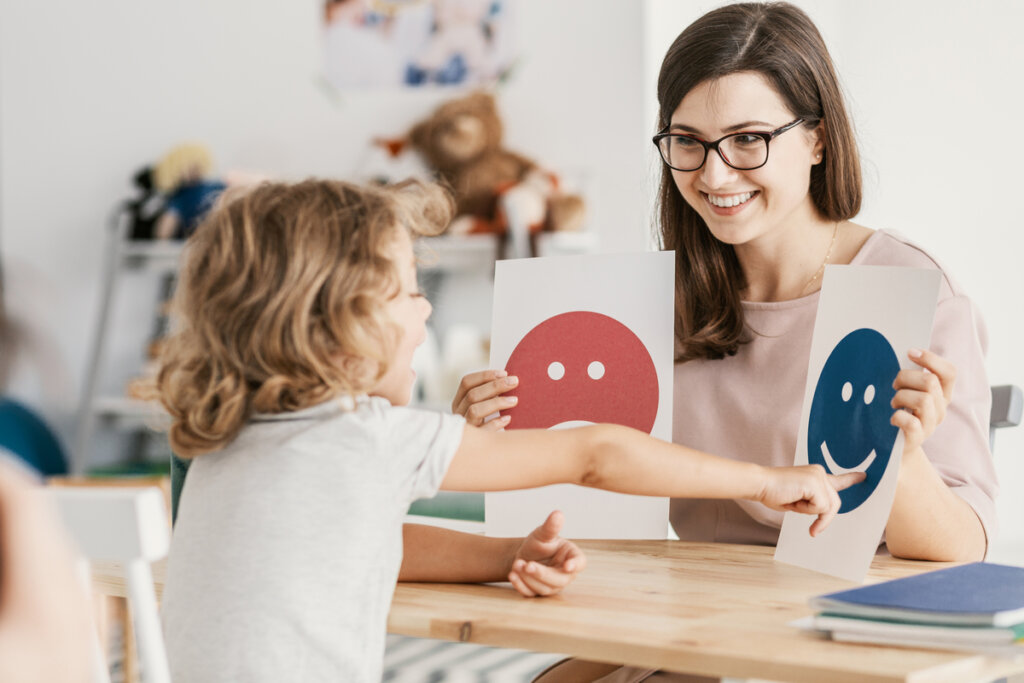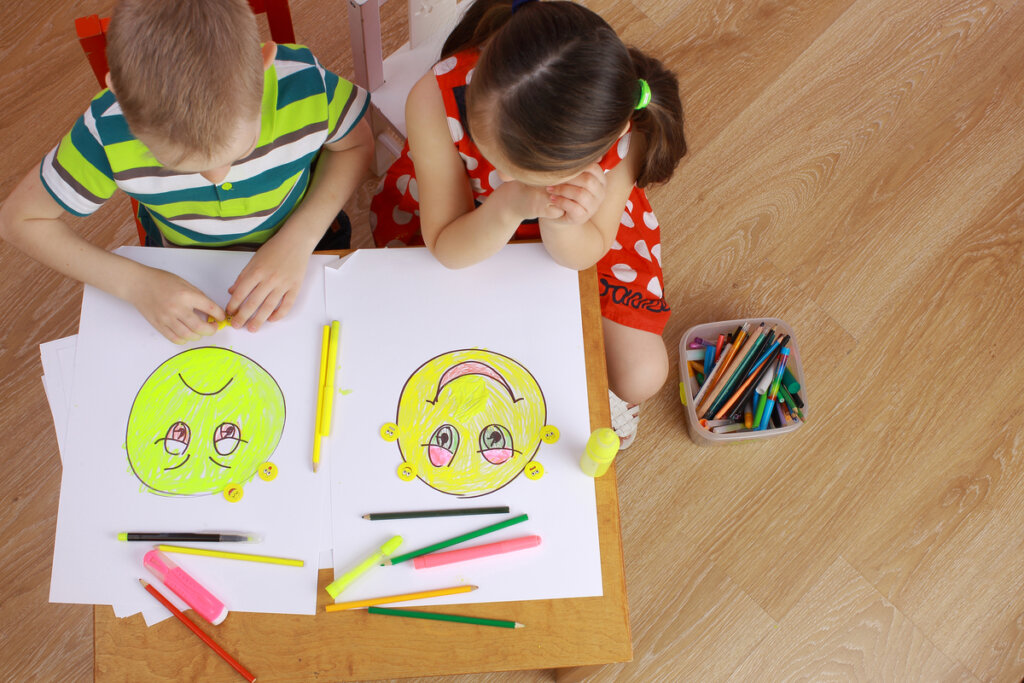How to Explain Emotions to Children


Written and verified by the psychologist Elena Sanz
Emotional education is one of the most important tasks that parents and educators must carry out with children. Indeed, children need to know how to deal adequately with their own and others’ moods to achieve well-being and success. However, explaining emotions to children can be difficult, since they’re subjective and personal experiences.
As a matter of fact, many adults are still uncomfortable dealing with negative emotional states. Consequently, when your child expresses rage, anger, sadness, or frustration, your automatic reaction might be to try to silence them or make them change to a more positive state of mind. Nevertheless, this might not always be appropriate. In fact, by doing this, you lose valuable opportunities to talk with your child about what’s happening inside them. So what’s the best way to explain emotions to children?
How to explain emotions to children

Name them
It’s best to explain them in a practical way that’s integrated into everyday life. That’s because children don’t yet have the necessary cognitive development to understand theoretical explanations in depth. For instance, they don’t handle abstract concepts or deferred examples particularly well. Furthermore, emotions have a subjective part that’s associated with each moment and its particular circumstances.
However, you can work to expand their emotional vocabulary in another way, by introducing them to the wide range of emotional states that exist and helping them to name them. Due to their young age, you might tend to limit yourself to using generic words such as to using words such as ‘good’ and ‘bad’ to talk about how you feel. However, don’t forget that language is the basis of thought. Therefore, if children don’t have enough words to designate their different internal states, it’ll be more difficult for them to understand and manage them.
To carry out this task, you can use tools such as The Emotions Book by Liz Fletcher, in which numerous emotions are specifically described. It’s also important that you begin to use different words to refer to both your own feelings and those of your children. After all, feeling ‘bad’ can encompass sadness, disappointment, frustration, and fear. So start using the right words.
Make it fun and natural
If you want to explain emotions to children, you don’t have to sit them down at a desk and have them write them down. In fact, play is always the best tool to transmit ideas, values, and knowledge. In this case, you can use their favorite stories and movies to identify the emotions of the characters and understand where they come from. While you read or watch television with them, you can comment on what’s happening, ask them questions, and make observations about what each character is feeling and why.
During this game, children unfold their own inner world and play to experience different realities through their stories and experiences. When you play with them, you can talk to them about the emotions that arise from different situations. For example: “Your dolly is excited because she’s going to the beach” or “She’s disappointed because her friend hasn’t invited her to the party”.

Set an example
Finally, let’s not forget that children learn mainly by imitation and that their main referents are their parents. Therefore, for a child, the best way to learn to regulate their emotions comes from the way their parents express and manage them. That said, you often tend to hide your own emotional states from your children because you don’t want them to worry. However, it’s positive that they see you feel and manage your own emotions since it’s a process that’s completely human and natural.
Therefore, you should work on your own emotional intelligence so that you can be the best possible role model for your children. Express yourself assertively, learn to manage your own emotional states, and be empathetic with the feelings of others, especially those of your children.
Without a doubt, this will be the most effective and understanding way for them to learn to relate to what they and those around them feel. It’s a skill that’ll open many doors for them in the future and, above all, will help them to be happier.
All cited sources were thoroughly reviewed by our team to ensure their quality, reliability, currency, and validity. The bibliography of this article was considered reliable and of academic or scientific accuracy.
- Barrett, L. F., Mesquita, B., Ochsner, K. N., & Gross, J. J. (2007). The experience of emotion. Annual review of psychology, 58, 373.
- Capote-Calvo, E. (2016). El emocionario de los cuentos (Bachelor’s thesis).
- Salguero, M. J. C. (2011). Importancia de la inteligencia emocional como contribución al desarrollo integral de los niños/as de educación infantil. Pedagogía magna, (11), 178-188.
This text is provided for informational purposes only and does not replace consultation with a professional. If in doubt, consult your specialist.








